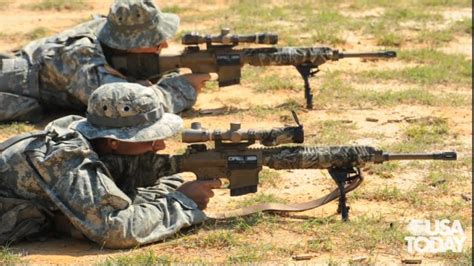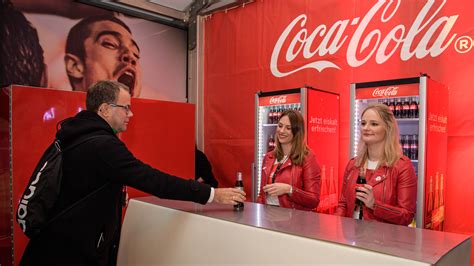
The U.S. Army’s new sniper rifle, the XM110E1 Squad Designated Marksman Rifle (SDMR), is capable of hitting targets at distances exceeding the maximum ranges available at Fort Benning, Georgia, raising concerns about the adequacy of current training facilities to fully utilize the weapon’s capabilities.
Fort Benning, GA – The U.S. Army’s deployment of the XM110E1 Squad Designated Marksman Rifle (SDMR), a weapon with an effective range surpassing the longest shooting ranges at Fort Benning, has sparked a debate over the suitability of existing training infrastructure for modern weaponry. The new rifle, intended to provide infantry squads with enhanced precision fire capabilities, can accurately engage targets at distances beyond 1,000 meters, a feat that cannot be fully tested on Fort Benning’s current ranges. This discrepancy raises questions about whether soldiers are receiving adequate training to maximize the rifle’s potential, and it is leading to calls for upgrades to the base’s training facilities.
The XM110E1 SDMR, a variant of the Heckler & Koch G28, represents a significant advancement in the Army’s small arms technology. It is designed to provide infantry squads with a weapon system that offers superior accuracy and range compared to standard issue rifles. The rifle fires 7.62mm rounds, providing greater stopping power and extended range capabilities compared to the 5.56mm rounds used in the M4 carbine, the standard rifle for most U.S. Army soldiers. The SDMR is equipped with advanced optics and adjustable stock, enhancing the shooter’s ability to engage targets at varying distances with greater precision.
According to a report by The War Zone, the longest shooting range at Fort Benning is approximately 1,000 meters. This means that soldiers training on these ranges are unable to fully test the XM110E1’s maximum effective range, potentially limiting their ability to develop the skills necessary to effectively employ the weapon in combat situations. The Army has acknowledged the limitations of the existing ranges, stating that they are exploring options to address the issue.
“The ranges at Fort Benning were not originally designed to accommodate weapons with the extended range capabilities of the XM110E1,” an Army spokesperson stated. “We are aware of the need to adapt our training facilities to meet the evolving demands of modern warfare, and we are actively assessing potential solutions.”
The situation highlights a broader challenge facing the U.S. military: the need to modernize training infrastructure to keep pace with rapid advancements in weapon technology. As new weapons systems with increased range and precision are developed and deployed, training ranges must be upgraded to allow soldiers to fully exploit their capabilities. Failure to do so could leave soldiers inadequately prepared for the challenges of modern combat.
Several potential solutions are being considered to address the range limitations at Fort Benning. One option is to extend the existing ranges, which would involve acquiring additional land and constructing new target areas. However, this could be a costly and time-consuming process. Another option is to utilize virtual training simulators, which allow soldiers to practice engaging targets at various distances in a realistic environment. While virtual training can be a valuable supplement to live-fire exercises, it cannot fully replicate the experience of shooting a real weapon in a real-world environment.
A third option is to send soldiers to other military installations that have longer ranges available. This would allow them to train with the XM110E1 at its maximum effective range, but it would also require additional travel and logistical support. It is also possible for the Army to develop new training protocols that focus on maximizing the use of the existing ranges, potentially through the use of more challenging target scenarios and advanced marksmanship techniques.
The discrepancy between the XM110E1’s capabilities and the limitations of Fort Benning’s ranges has raised concerns among some members of the military community. Some experts argue that the Army should have addressed the range issue before fielding the new rifle. “It’s like buying a high-performance sports car and then only being able to drive it on a small track,” said a retired Army sniper instructor. “You’re not getting the full benefit of the vehicle, and you’re not developing the skills you need to handle it properly.”
Others argue that the Army is taking appropriate steps to address the issue and that the XM110E1 will still provide a significant advantage to infantry squads, even if soldiers are not able to train at its maximum effective range. “The XM110E1 is a vastly superior weapon compared to the M4,” said a current Army infantry officer. “Even if we can’t train at 1,000 meters, we can still use it to engage targets at longer ranges than we could with the M4, which will give us a significant advantage in combat.”
The debate over the XM110E1 and the ranges at Fort Benning highlights the ongoing challenge of modernizing military training to keep pace with technological advancements. As the Army continues to develop and deploy new weapons systems, it must also invest in the infrastructure and training programs necessary to ensure that soldiers are fully prepared to use them effectively. The stakes are high, as the lives of soldiers on the battlefield may depend on their ability to master these new technologies.
The Army is currently evaluating several proposals for upgrading its training facilities and is expected to make a decision on the matter in the coming months. In the meantime, soldiers will continue to train with the XM110E1 on the existing ranges at Fort Benning, using the best available resources and techniques to maximize their effectiveness. The Army has also emphasized the importance of continuous feedback from soldiers in the field to inform future training and equipment development efforts. This iterative process is essential to ensure that the Army remains at the forefront of military technology and that soldiers are always equipped with the tools and training they need to succeed on the battlefield.
The XM110E1 SDMR represents a significant step forward in the Army’s efforts to modernize its infantry forces. By providing soldiers with a weapon system that offers superior accuracy and range, the Army hopes to enhance their ability to engage and defeat enemy forces in a variety of combat scenarios. However, the success of this effort will depend not only on the capabilities of the weapon itself, but also on the Army’s ability to provide soldiers with the training and resources they need to fully utilize its potential. The situation at Fort Benning serves as a reminder of the importance of investing in both technology and training to ensure that soldiers are always prepared for the challenges of modern warfare.
The issue extends beyond just the XM110E1. The Army’s Next Generation Squad Weapon (NGSW) program, which aims to replace the M4 carbine and M249 Squad Automatic Weapon, promises even greater range and lethality. As these new weapons are fielded, the need for upgraded training facilities will only become more pressing. The Army must act proactively to address these challenges to ensure that its soldiers are fully prepared for the future of warfare.
The Army’s modernization efforts are not limited to small arms. The service is also investing heavily in new vehicles, aircraft, and communication systems. These investments are designed to enhance the Army’s ability to conduct a wide range of operations, from counterterrorism to large-scale combat. However, the success of these modernization efforts will depend on the Army’s ability to integrate these new technologies into its existing force structure and training programs.
The situation at Fort Benning underscores the importance of a holistic approach to modernization. The Army must not only acquire new weapons and equipment but also invest in the infrastructure, training, and personnel necessary to support them. Failure to do so could leave the Army with a force that is technologically advanced but ill-prepared for the realities of modern combat.
In conclusion, the discrepancy between the capabilities of the XM110E1 SDMR and the limitations of the ranges at Fort Benning highlights a critical challenge facing the U.S. Army: the need to modernize its training infrastructure to keep pace with rapid advancements in weapon technology. While the Army is taking steps to address this issue, it must act decisively to ensure that soldiers are fully prepared to utilize the full potential of the new weapons they are being issued. The lives of soldiers on the battlefield may depend on it.
The Army’s modernization efforts also extend to the virtual realm. The service is developing advanced simulation tools that allow soldiers to train in realistic, virtual environments. These simulations can replicate a wide range of combat scenarios, from urban warfare to jungle operations. By providing soldiers with the opportunity to practice their skills in a safe and controlled environment, the Army hopes to improve their readiness for real-world combat.
However, virtual training is not a substitute for live-fire exercises. There are certain aspects of combat that cannot be replicated in a virtual environment, such as the stress and adrenaline of being under fire. For this reason, the Army continues to emphasize the importance of live-fire training, even as it invests in new virtual training technologies.
The Army is also exploring the use of artificial intelligence (AI) to enhance its training programs. AI-powered training systems can adapt to the individual needs of each soldier, providing personalized instruction and feedback. These systems can also be used to create more challenging and realistic training scenarios. By leveraging the power of AI, the Army hopes to accelerate the learning process and improve the overall effectiveness of its training programs.
One of the key challenges facing the Army is the need to train soldiers to operate in complex, multi-domain environments. Modern warfare is no longer confined to the land, sea, and air. It now extends into the cyber and space domains as well. To be successful in these environments, soldiers must be able to integrate information from multiple sources and coordinate their actions with other units and services.
The Army is addressing this challenge by developing new training programs that emphasize multi-domain operations. These programs teach soldiers how to operate in a networked environment and how to integrate information from different domains. The Army is also investing in new technologies that will enable soldiers to communicate and coordinate more effectively in these environments.
The Army’s modernization efforts are a continuous process. As new technologies emerge and the nature of warfare evolves, the Army must adapt its training programs and equipment to stay ahead of the curve. This requires a commitment to innovation and a willingness to embrace new ideas. The Army is committed to meeting these challenges and ensuring that its soldiers are always prepared for the future of warfare.
The Fort Benning issue isn’t isolated; similar concerns are arising at other military installations as weapons technology outpaces existing infrastructure. This necessitates a comprehensive review of training facilities across all branches of the military to ensure they can support the capabilities of modern weaponry. This review should include assessments of range lengths, target systems, and the integration of virtual training technologies.
Furthermore, collaboration between weapon developers and training facility managers is crucial. Early communication about the capabilities of new weapons systems can allow for proactive planning and upgrades to training facilities, minimizing the gap between technology and training capabilities. This collaborative approach can also help identify potential limitations of new weapons systems early in the development process, leading to design modifications that better align with existing training infrastructure.
The Army’s investment in soldier lethality is significant, but it must be coupled with an equally robust investment in training infrastructure and methodologies. This includes not only physical ranges but also virtual training environments and the development of adaptive training programs that can cater to individual soldier needs. The ultimate goal is to create a training ecosystem that maximizes the effectiveness of soldiers on the battlefield.
The debate also brings to light the need for more realistic and challenging training scenarios. Soldiers should be exposed to a variety of combat situations, including urban warfare, jungle operations, and desert environments. These scenarios should incorporate realistic threats, such as enemy snipers, improvised explosive devices (IEDs), and cyberattacks. By training in these complex environments, soldiers will be better prepared to face the challenges of modern warfare.
Moreover, the Army should consider expanding its partnerships with other countries to provide soldiers with access to a wider range of training facilities and environments. These partnerships can also facilitate the exchange of best practices and the development of joint training programs. By working with allies and partners, the Army can enhance its readiness and improve its ability to operate in a multinational environment.
The challenge of modernizing military training is not unique to the U.S. Army. Other countries around the world are facing similar challenges as they seek to adapt their forces to the changing nature of warfare. The U.S. Army can learn from the experiences of these countries and adopt best practices in training and modernization. By collaborating with allies and partners, the U.S. Army can enhance its readiness and improve its ability to operate in a multinational environment.
The situation at Fort Benning is a microcosm of the larger challenges facing the U.S. military as it seeks to modernize its forces for the 21st century. The Army must not only acquire new weapons and equipment but also invest in the infrastructure, training, and personnel necessary to support them. Failure to do so could leave the Army with a force that is technologically advanced but ill-prepared for the realities of modern combat.
Frequently Asked Questions (FAQ)
-
What is the XM110E1 Squad Designated Marksman Rifle (SDMR)?
The XM110E1 SDMR is a semi-automatic rifle chambered in 7.62mm, designed to provide infantry squads with enhanced precision fire capabilities at extended ranges. It’s a variant of the Heckler & Koch G28, and it offers greater stopping power and range compared to the standard M4 carbine. The SDMR is equipped with advanced optics and an adjustable stock to improve accuracy and ergonomics.
-
Why is the XM110E1 SDMR causing concern at Fort Benning?
The primary concern is that the XM110E1 SDMR has an effective range exceeding 1,000 meters, while the longest shooting ranges at Fort Benning are only about 1,000 meters. This means soldiers cannot fully test and train with the rifle at its maximum effective range on the base’s current facilities. This limitation potentially hinders their ability to develop the necessary skills to effectively employ the weapon in combat.
-
What are some potential solutions to address the range limitations at Fort Benning?
Several solutions are being considered, including:
- Extending existing ranges by acquiring additional land and constructing new target areas.
- Utilizing virtual training simulators to allow soldiers to practice engaging targets at various distances.
- Sending soldiers to other military installations with longer ranges available.
- Developing new training protocols that maximize the use of existing ranges with challenging target scenarios and advanced marksmanship techniques.
-
How does this issue relate to the Army’s broader modernization efforts?
The situation highlights a larger challenge for the U.S. Army: the need to modernize training infrastructure to keep pace with rapid advancements in weapon technology. As new weapons systems with increased range and precision are developed and deployed, training ranges must be upgraded to allow soldiers to fully exploit their capabilities. The Army must invest not only in new weapons and equipment, but also in the infrastructure, training, and personnel necessary to support them.
-
What are the implications if the Army doesn’t address these training range limitations?
If the Army fails to address the range limitations, soldiers may be inadequately prepared for the challenges of modern combat. They might not fully develop the skills needed to effectively use the XM110E1 SDMR at its maximum potential, potentially diminishing its effectiveness on the battlefield. This could put soldiers at a disadvantage in engagements with adversaries who are equipped with similar or superior weaponry and have received more comprehensive training. The Army’s overall readiness and combat effectiveness could be negatively impacted.
-
Beyond range length, what other aspects of training facilities need modernization to effectively train soldiers on the SDMR and similar advanced weapon systems?
Modernizing training facilities goes beyond just extending the range. Other key aspects include:
-
Targeting Systems: Upgrading to more advanced and realistic target systems, including moving targets, pop-up targets, and targets that simulate different types of enemy combatants, is crucial. These systems should be capable of accurately simulating the ballistic effects of the SDMR at various distances, including wind drift and bullet drop. Smart targets that provide immediate feedback on shot placement would also be beneficial.
-
Environmental Simulation: Creating training environments that simulate various weather conditions, such as rain, snow, fog, and high winds, is important. These conditions can significantly affect the accuracy of the SDMR and require soldiers to adjust their aiming and shooting techniques accordingly. Simulating different lighting conditions, such as dawn, dusk, and nighttime, is also essential.
-
Acoustic Simulation: Incorporating realistic battlefield sounds, such as gunfire, explosions, and vehicle noise, can help to create a more immersive and stressful training environment. This can help soldiers to develop the mental resilience and situational awareness necessary to perform effectively in combat.
-
Data Collection and Analysis: Implementing systems to collect and analyze data on soldier performance during training exercises is essential. This data can be used to identify areas where soldiers need additional training and to track their progress over time. The data can also be used to evaluate the effectiveness of different training methods and to optimize training programs accordingly.
-
Integration of Virtual Reality (VR) and Augmented Reality (AR): Integrating VR and AR technologies into training programs can provide soldiers with realistic and immersive training experiences that are not possible with traditional methods. VR can be used to simulate a wide range of combat scenarios, while AR can be used to overlay digital information onto the real world, providing soldiers with real-time information on enemy positions, target locations, and other important data.
-
Cybersecurity Measures: As weapon systems become more reliant on digital technologies, it is essential to incorporate cybersecurity training into the curriculum. Soldiers need to be aware of the potential threats posed by cyberattacks and how to protect their systems from compromise.
-
Medical Simulation: Incorporating medical simulation into training exercises can help soldiers to develop the skills and knowledge necessary to provide first aid to themselves and their comrades in combat. This includes training on how to stop bleeding, treat burns, and manage other common combat injuries.
-
-
What are the potential impacts on soldier morale and retention if training is perceived as inadequate or outdated?
Perceptions of inadequate or outdated training can significantly impact soldier morale and retention. Potential negative impacts include:
-
Decreased Confidence: Soldiers may lose confidence in their abilities and in the effectiveness of their equipment if they feel that they are not adequately trained to use it. This can lead to increased stress and anxiety during combat situations.
-
Reduced Job Satisfaction: Soldiers may become dissatisfied with their jobs if they feel that they are not being given the resources and training they need to succeed. This can lead to decreased motivation and productivity.
-
Increased Attrition: Soldiers may be more likely to leave the Army if they feel that they are not being adequately prepared for the challenges of modern warfare. This can lead to a shortage of skilled personnel and a decline in overall readiness.
-
Erosion of Trust: Soldiers may lose trust in the Army’s leadership if they feel that their needs are not being met. This can undermine morale and discipline and make it more difficult to achieve mission objectives.
-
Negative Impact on Recruiting: Negative perceptions of training can also impact recruiting efforts, making it more difficult to attract qualified candidates.
To mitigate these negative impacts, the Army must prioritize investments in modernizing training facilities and programs and communicate these efforts effectively to soldiers. Demonstrating a commitment to providing soldiers with the best possible training and equipment can help to boost morale, improve retention, and enhance overall readiness.
-
-
How does the limited range at Fort Benning impact the development of advanced sniper tactics and techniques?
The limited range at Fort Benning restricts the development and refinement of advanced sniper tactics and techniques in several ways:
-
Restricted Long-Range Engagement Practice: Snipers cannot practice engaging targets at the SDMR’s maximum effective range, which is essential for developing the skills needed to accurately compensate for wind, bullet drop, and other environmental factors at long distances.
-
Limited Opportunity to Validate Ballistic Data: Snipers rely on accurate ballistic data to make precise shots at long ranges. The limited range at Fort Benning restricts their ability to validate this data and make necessary adjustments.
-
Reduced Ability to Develop Advanced Camouflage and Concealment Techniques: Effective camouflage and concealment are essential for snipers to remain undetected in the field. The limited range at Fort Benning restricts their ability to practice and refine these techniques in realistic environments.
-
Challenges in Developing Advanced Observation and Target Acquisition Skills: Snipers must be able to quickly and accurately identify and acquire targets at long ranges. The limited range at Fort Benning restricts their ability to develop these skills in realistic scenarios.
-
Limited Opportunity to Integrate Advanced Technologies: Snipers are increasingly reliant on advanced technologies, such as thermal imaging sights and laser rangefinders. The limited range at Fort Benning restricts their ability to integrate these technologies into their training and develop effective tactics for using them.
-
Impeded Development of Teamwork and Communication Skills: Sniper teams must be able to work together effectively and communicate clearly, especially at long ranges. The limited range at Fort Benning restricts their ability to develop these skills in realistic scenarios.
-
Stunted Innovation: The restrictions placed on sniper training due to limited range can stifle innovation and prevent the development of new and more effective sniper tactics and techniques.
To overcome these limitations, the Army needs to invest in expanding the range at Fort Benning and other sniper training facilities and incorporate advanced technologies and realistic training scenarios into its sniper training programs.
-
-
What is the cost estimate for upgrading Fort Benning’s ranges to accommodate the SDMR and future weapon systems, and how does this compare to the cost of acquiring the new weapon systems themselves?
Providing a precise cost estimate for upgrading Fort Benning’s ranges is difficult without detailed engineering studies and specific project plans. However, a general estimate can be inferred based on typical military construction costs and the scope of the required upgrades.
Cost Factors for Range Upgrades:
-
Land Acquisition: If additional land is required to extend the ranges, this can be a significant cost factor, especially if the land is privately owned or located in a densely populated area. Costs can range from several hundred thousand to millions of dollars, depending on the size and location of the land.
-
Earthwork and Construction: Extending the ranges would require extensive earthwork, including grading, leveling, and the construction of new target areas and safety berms. These costs can range from several million to tens of millions of dollars, depending on the size and complexity of the project.
-
Target Systems: Upgrading to more advanced and realistic target systems, including moving targets, pop-up targets, and smart targets, can add several million dollars to the cost.
-
Environmental Mitigation: Compliance with environmental regulations can add significant costs, especially if the project involves disturbing sensitive habitats or wetlands.
-
Infrastructure Improvements: Upgrading existing infrastructure, such as roads, utilities, and communication systems, can also add to the cost.
Cost of XM110E1 SDMR Acquisition:
- The exact cost per unit of the XM110E1 SDMR is not publicly available, but estimates suggest it is significantly more expensive than the standard M4 carbine. Considering it is a variant of the Heckler & Koch G28, which can cost several thousand dollars per rifle, the total cost of acquiring enough SDMRs to equip designated marksmen in infantry squads across the Army would likely be in the tens or hundreds of millions of dollars.
Comparison:
-
While a comprehensive upgrade of Fort Benning’s ranges to fully accommodate the SDMR and future weapon systems could potentially cost tens of millions of dollars, this is a recurring investment that benefits the entire force. The cost of acquiring the new weapon systems themselves is a one-time expense but ensures every infantry has the ability to better respond to different combat situations. Therefore the Army’s investment in both, training and weaponry, should be equal.
-
Ultimately, the cost-effectiveness of upgrading the ranges depends on a thorough cost-benefit analysis that considers the long-term benefits of improved training and the potential cost savings from reduced casualties and improved combat effectiveness.
-
-
What alternative training methods, besides live-fire ranges, can be employed to mitigate the limitations of physical range size?
Several alternative training methods can be employed to mitigate the limitations of physical range size:
-
Virtual Reality (VR) and Augmented Reality (AR) Simulators: These technologies can create immersive and realistic training environments that simulate a wide range of combat scenarios. VR can transport soldiers to virtual battlefields, while AR can overlay digital information onto the real world, providing real-time data on enemy positions and target locations. VR/AR simulators can be used to practice marksmanship, tactical maneuvers, and other essential skills.
-
Engagement Skills Trainers (ESTs): ESTs are computer-based simulators that allow soldiers to practice marksmanship skills in a controlled environment. These simulators can be programmed to simulate different weather conditions, target distances, and enemy tactics. ESTs are a cost-effective way to provide soldiers with realistic marksmanship training without the need for live ammunition.
-
Laser Engagement Training Systems (LETS): LETS use lasers and sensors to simulate live-fire engagements. Soldiers wear sensors that detect laser strikes, and the system provides feedback on their performance. LETS can be used to conduct realistic tactical training exercises in urban environments, forests, and other complex terrain.
-
Modeling and Simulation (M&S): M&S tools can be used to create virtual models of battlefields and simulate different combat scenarios. Soldiers can use these models to plan missions, rehearse tactics, and analyze potential outcomes. M&S can also be used to train soldiers on the use of new weapons and equipment.
-
Cognitive Training: Cognitive training programs can improve soldiers’ attention, memory, and decision-making skills. These programs can be used to enhance soldiers’ situational awareness, reaction time, and ability to perform under stress.
-
Scenario-Based Training: Scenario-based training involves creating realistic combat scenarios and having soldiers respond to them. These scenarios can be used to train soldiers on a wide range of skills, including marksmanship, tactical maneuvers, communication, and leadership.
-
Stress Inoculation Training: Stress inoculation training involves exposing soldiers to stressful situations and teaching them coping mechanisms to manage their stress. This type of training can help soldiers to remain calm and focused under pressure, improving their performance in combat.
-









